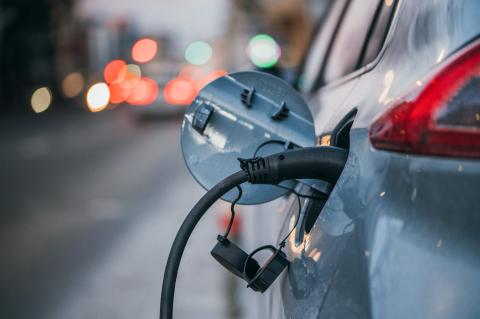New Wave of Electric Vehicles Ready to Charge at 70 mph
New Wave of Electric Vehicles Ready to Charge at 70 mph

Despite the increasing number of electric vehicles (EVs) capable of traveling over 300 miles on a single charge, range anxiety remains a significant barrier to widespread adoption, particularly in the U.S. A straightforward solution to alleviate fears of being stranded mid-trip is to equip cars with an onboard charger. Unlike traditional hybrids that use gas to power the wheels, a new generation of vehicles uses gas solely to charge a large onboard battery. This approach, though not particularly efficient or cheap, could be a game-changer in an era of inadequate charging infrastructure and polarized politics.
John Krzeminski, an engineer at Detroit-based Strange Development, which builds and tests powertrains for major car companies, explains that this strategy provides customers with the functionality they want while still relying on electricity for most daily driving. He predicts a surge in range-extending hybrids as auto executives seek to bridge the gap for drivers who are both interested in and skeptical of EVs.
One example is the 2025 Ramcharger pickup by Stellantis NV, set to launch next year. This truck will travel 145 miles on a 92 kWh battery, covering most daily commutes. It also features a 6-cylinder engine to recharge the battery while driving, effectively acting as a mobile charging station at speeds of 75 mph. Joe Tolkacz, a chief engineer at Stellantis, highlights that while some segments prefer larger batteries, others are not yet ready for a fully electric truck and still want the extended range offered by traditional fuels.
Range-extending hybrids are not new. BMW introduced the concept to the mainstream in 2013 with the i3, which featured a small gas engine. Although BMW sold fewer than 50,000 units before discontinuing the model in 2022, the i3's approach remains relevant as charging infrastructure remains a significant obstacle to EV adoption in America.
While onboard generators are less efficient than utility-scale power plants, the strategy is greener than it appears. Americans often overestimate their driving needs and underestimate the growing number of charging stations. Once the gas engine in the new Ram trucks kicks in, the vehicle may be less efficient than traditional internal combustion engines, but it will rarely rely on gasoline.
Stefan Meisterfeld, vice president of strategic planning at Mazda Motor, notes that vehicles with range extenders are ideal for people who primarily use electric power but occasionally need the extra range. Mazda’s MX-30, available with and without a range-extending engine, is popular in Japan and Europe for this reason, and the company plans to introduce the feature in more models soon.
Range-extending vehicles also offer a way to navigate the cultural divide over EVs. While EVs are a cornerstone of the Biden administration's climate policy, they face backlash from some political groups. Vehicles like the Ramcharger can appeal to drivers skeptical of fully electric cars while still promoting environmental benefits.
Ultimately, range extenders may serve as a transitional technology, similar to how ashtrays, CD players, and carburetors have faded over time. However, they currently address a significant market need. David Slutzky, CEO of Fermata Energy, sees the range extender as a viable solution for those who want to drive electric but are let down by the current state of fast-charging infrastructure. He believes this "stopgap" technology could remain relevant for years.
Article source: https://www.japantimes.co.jp/business/2024/07/28/tech/electric-vehicles-new-wave/
Photo attribution: Ivan Radic, Close-up of an electric car charging. Traffic lights in a blurry background, CC BY 2.0

Το comment on the article or to read all articles, please sign in or sign up